In late summer, at the end of the breeding season, the vast expanse of the Canadian Arctic begins to empty as millions of pristine juvenile shorebirds, born just weeks beforehand, embark on the first southbound migration of their lives.
They are bound for warmer climes, with most species spending the boreal winter from the southern United States south to coastal South America – with some travelling as far as Patagonia. These long-distant migrants are some of the world's great wanderers, possessing the extraordinary capability to habitually fly many thousands of kilometres with bewildering ease.
It is this great capacity for travel that helps make them such regular fixtures on 'our' side of the Atlantic. The west Irish coastline is 'only' 3,200 km in a direct line from eastern Nunavut, where many of the Arctic breeders' ranges begin. By comparison, Texas is 4,100 km away and Patagonia an eye-watering 12,000 km. Baird's Sandpiper, the most spectacular traveller of them all, routinely flies as much as 6,000 km non-stop from southern Canada to northern South America in autumn. And, of course, let's not forget that male Pectoral Sandpipers have been recorded journeying up to 8,000 km during a single summer in order to have sex with as many females as possible. As such, a casual hop across the Atlantic is child's play for many species, which in turn makes them pleasantly regular as vagrants over here.
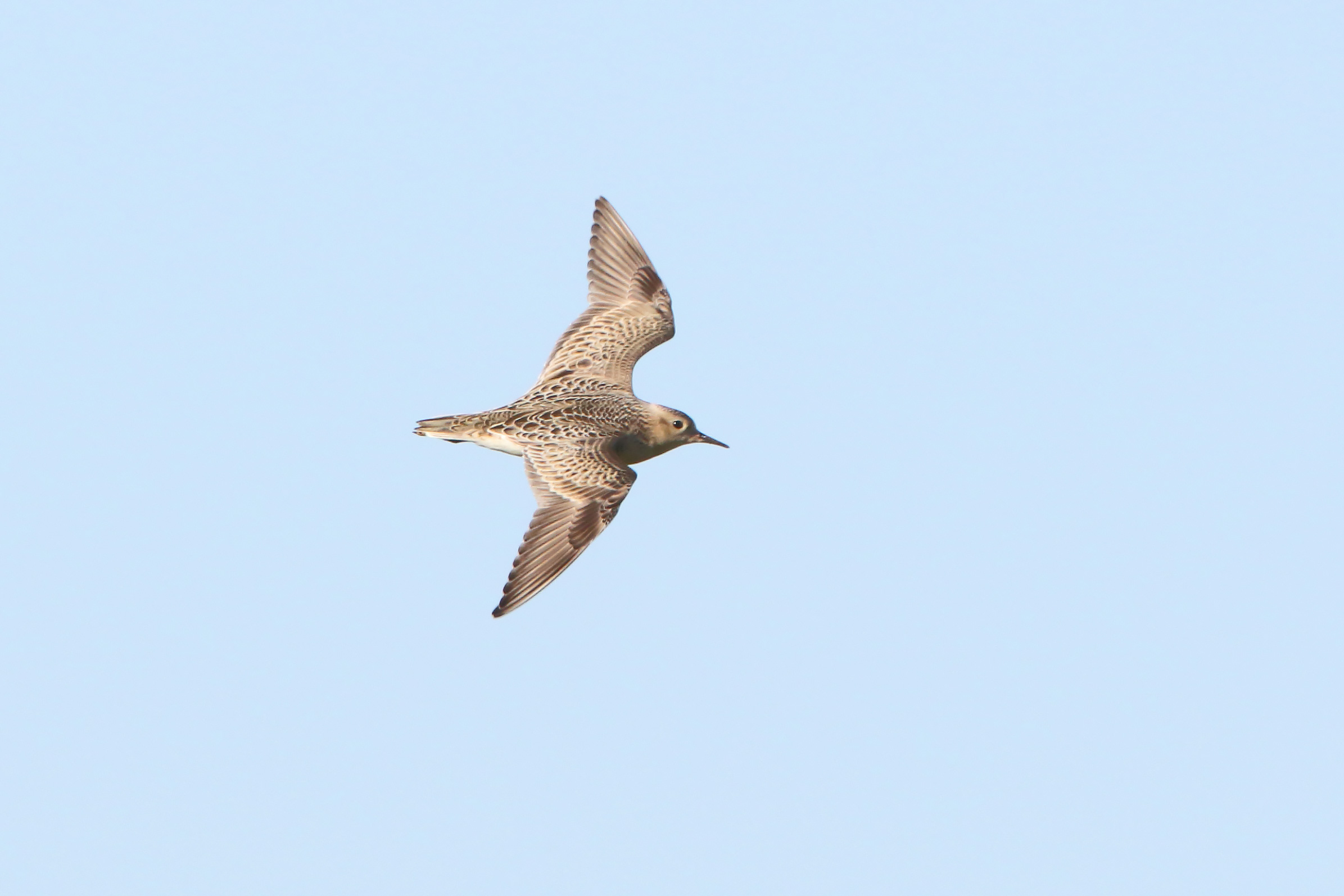
With their proportionally long wings and streamlined structure, shorebirds such as this Buff-breasted Sandpiper are built for long-distance flights, making them particularly prone to vagrancy (Jim Almond).
However, adults, streetwise from years of experience, are typically less prone to off-piste wanderings, hence the comparative rarity of Nearctic species in Britain and Ireland throughout July and August. It the overriding inexperience and naivety of the youngsters, which commence their southbound movements after their parents as summer gives way to autumn, that makes them far more susceptible to becoming lost or displaced by transatlantic weather systems – and thus ending up in Europe. And, from the second half of August, the possibility of happening upon a young Nearctic wader begins to rise exponentially.
Juvenile waders are popular among birders for many reasons. Not only are they beautiful, elegant and immaculately dressed, but also typically unafraid. They are the epitome of one of the last great wildernesses on the planet, which gives them an enigmatic quality. Most will never have seen humans before, or indeed had a run-in with a predator – this innocence routinely translates to total fearlessness, allowing birders to enjoy some of their most intimate and memorable encounters with wild birds in their company. Of course, there is the added rarity value of Nearctic waders, which only enhances their appeal.
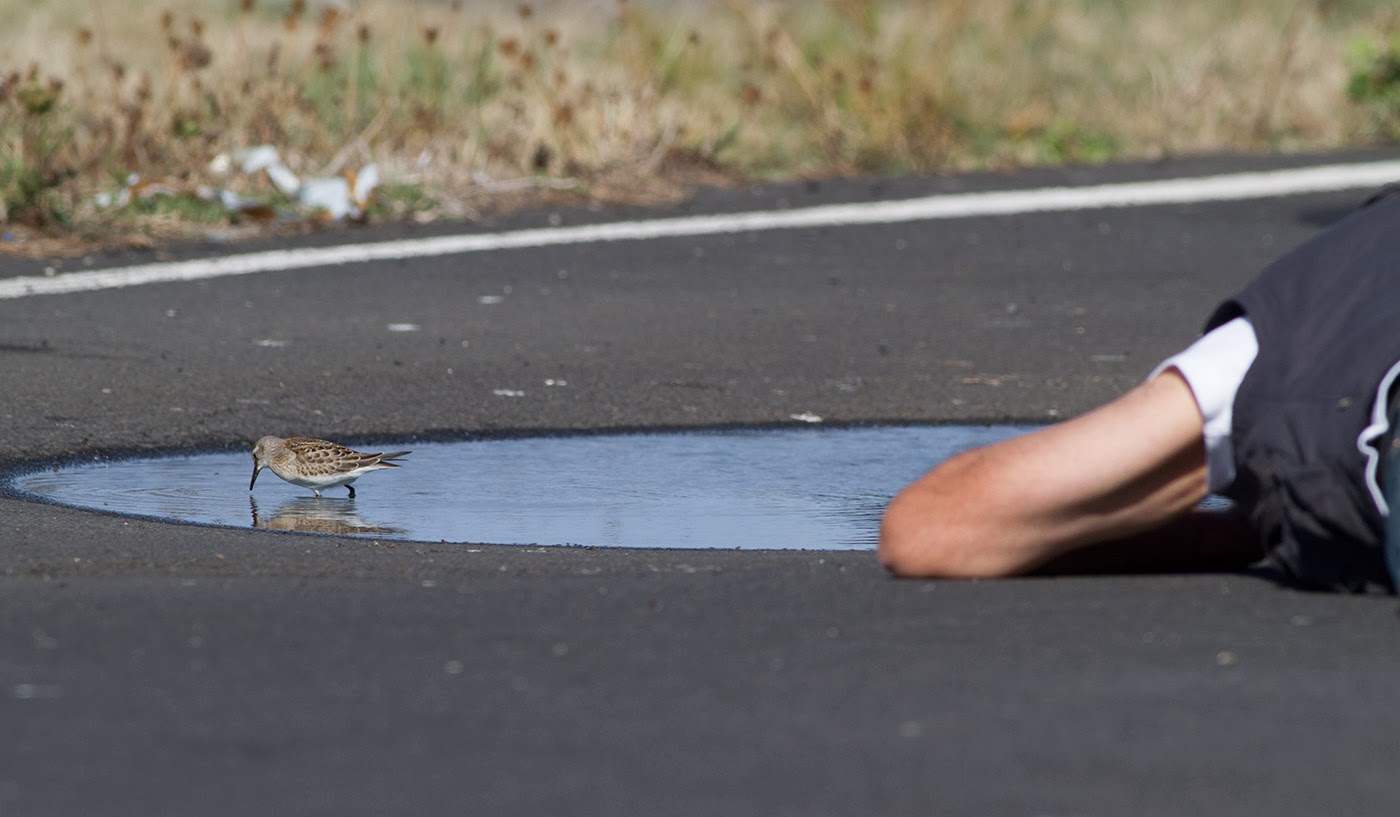
A juvenile White-rumped Sandpiper feeds unconcernedly to within inches of a photographer. Such experiences are not uncommon with juvenile waders, which haven't yet learn to fear man or other potential predators (Josh Jones).
What to look for and when
Being such strong fliers, Nearctic waders can and do turn up in Britain and Ireland in any conditions, although they are always at their most prominent during unsettled periods, dominated by a westerly airflow and the arrival of fast-moving transatlantic depressions from North America. As such, their numbers fluctuate on an annual basis. In settled autumns, where the Azores High dominates and our isles bask in 'Indian summer' conditions well into September, Nearctic waders can be very difficult to come by. However, in years where tropical storm activity in the North Atlantic is high, such as in 2011, there can be spectacular arrivals and consequently even the rarer species can be numerous. While transatlantic systems are optimal for bringing birds across from North America, a westerly airflow over the Atlantic is usually good enough to start producing a few arrivals.
As with Holarctic waders, juveniles of the more southerly-breeding Nearctic species tend to appear first. Spotted Sandpiper, which breeds across much of temperate North America, is the earliest, with youngsters recorded on this side of the Atlantic as early as the first week of August. However, new Spotted Sandpipers are routinely unearthed well into October, even November, illustrating their propensity for occurring at just about any time throughout the autumn months. The same applies for the prairie-breeding Wilson's Phalarope, which can occur at any time from mid-August onwards, albeit usually only one or two each year.
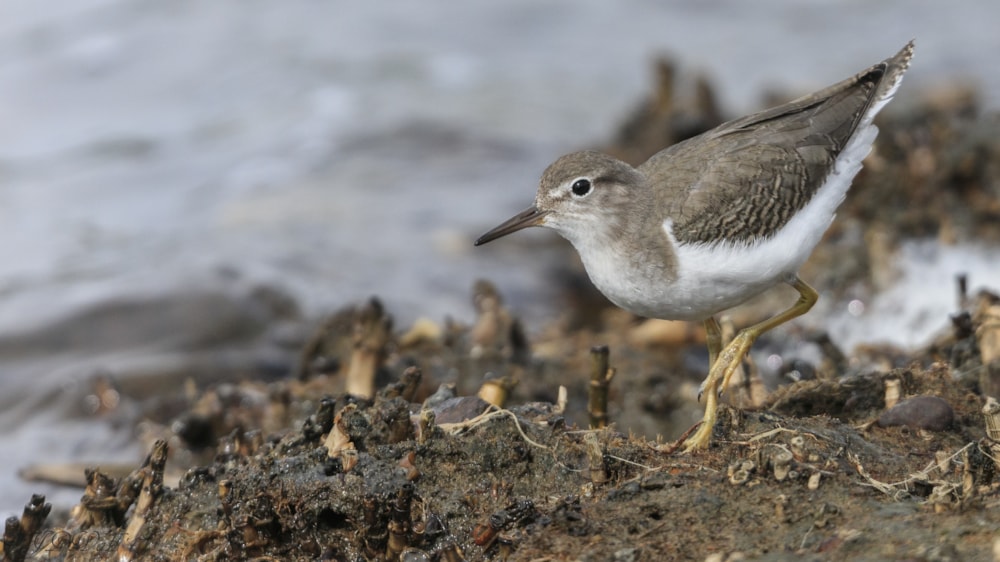
Young Spotted Sandpipers present more of an identification challenge when compared to their spotty parents – they can occur any time from the first half of August (John Wall).
Following these come the taiga breeders, such as the widespread Lesser Yellowlegs, which can appear from mid-August, the rarer Solitary Sandpiper and extremely rare Short-billed Dowitcher. Though juvenile Short-billeds have not yet occurred in Britain or Ireland in August, there are multiple records from the first few days of September both here and in the Azores. Several juvenile Solitary Sandpipers have been recorded in the final third of the August, with more in September and October.
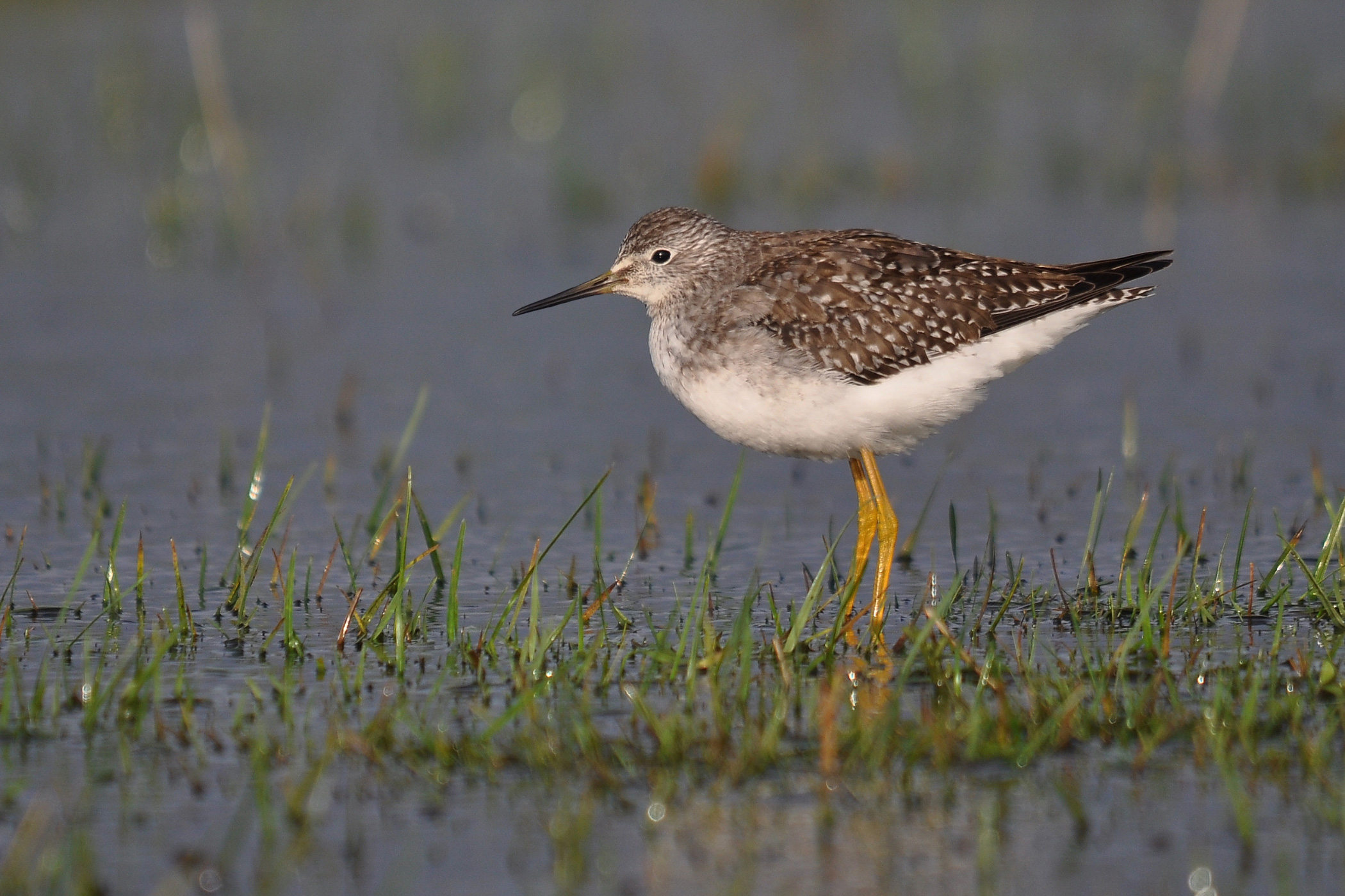
Although annual in small numbers, Lesser Yellowlegs remains rare enough to constitute a memorable find for any British or Irish birder (Rónán McLaughlin).
Concurrently, the door opens to the tundra specialists towards the end of August. By rule of thumb, juvenile Buff-breasted, Semipalmated, Baird's and Pectoral Sandpipers all begin to occur from around 20th, should conditions be favourable, although 'first dates' vary slightly year on year. These four species are arguably the classic September waders, synonymous with the season due to their regularity and popularity, and arrivals tend to peak in mid to late September, depending on weather conditions. Two of these, Baird's and Semipalmated Sandpipers, are still considered rarities by the British Birds Records Committee (BBRC), although the latter seems destined to be relegated to a scarcity as increasing numbers are found and identified here each year. Nevertheless, all four remain prized finds for either British or Irish birders and any would certainly signify a successful day's wadering if chanced upon.
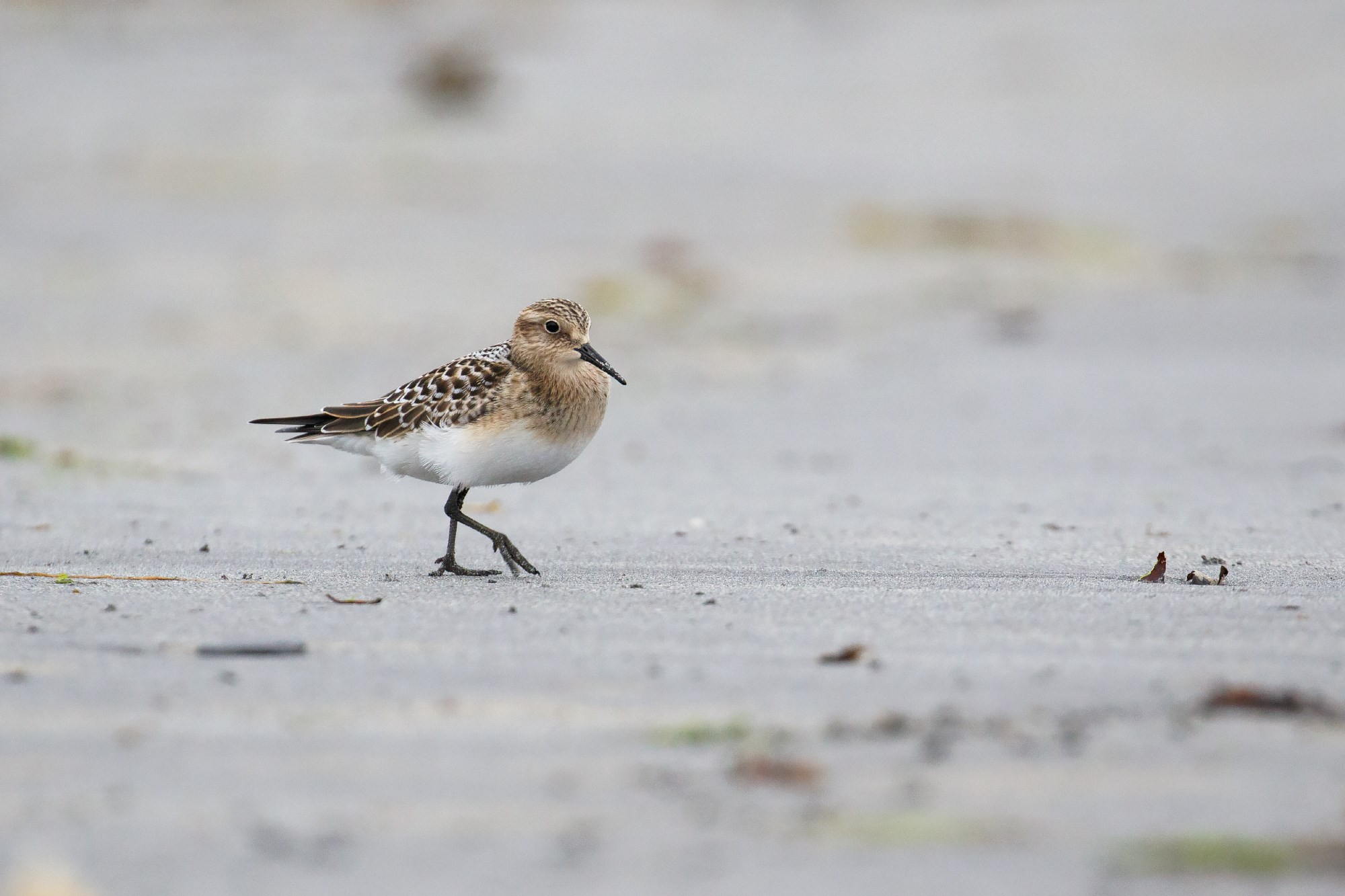
Juvenile Baird's Sandpipers tend to appear from the last week of August, peaking in mid-September (Josh Jones).
The regularity of Buff-breasted Sandpiper on our shores is peculiarity in itself. It has a relatively small and declining world population, possibly of fewer than 50,000 individuals, and primarily migrates through the interior of the continent in autumn, yet it is second only to Pectoral Sandpiper (estimated North American population of 1.6 million individuals) in terms of regularity in Britain and Ireland. It is also considerably more numerous than Baird's (300,000 individuals) and Semipalmated (3.5 million) Sandpipers. Quite why this is remains a mystery, and it is often joked that it can be easier for a birder based here to see this characterful, ochre-coloured sandpiper in autumn than one based in the US. In fact, it has been known to occur in impressively large flocks on this side of the Atlantic – for example, the extraordinary autumn of 2011 produced groups of 28 at Tacumshin, Co Wexford, and 15 at Loop Head, Co Clare, among a major influx of the species that totalled into the hundreds.
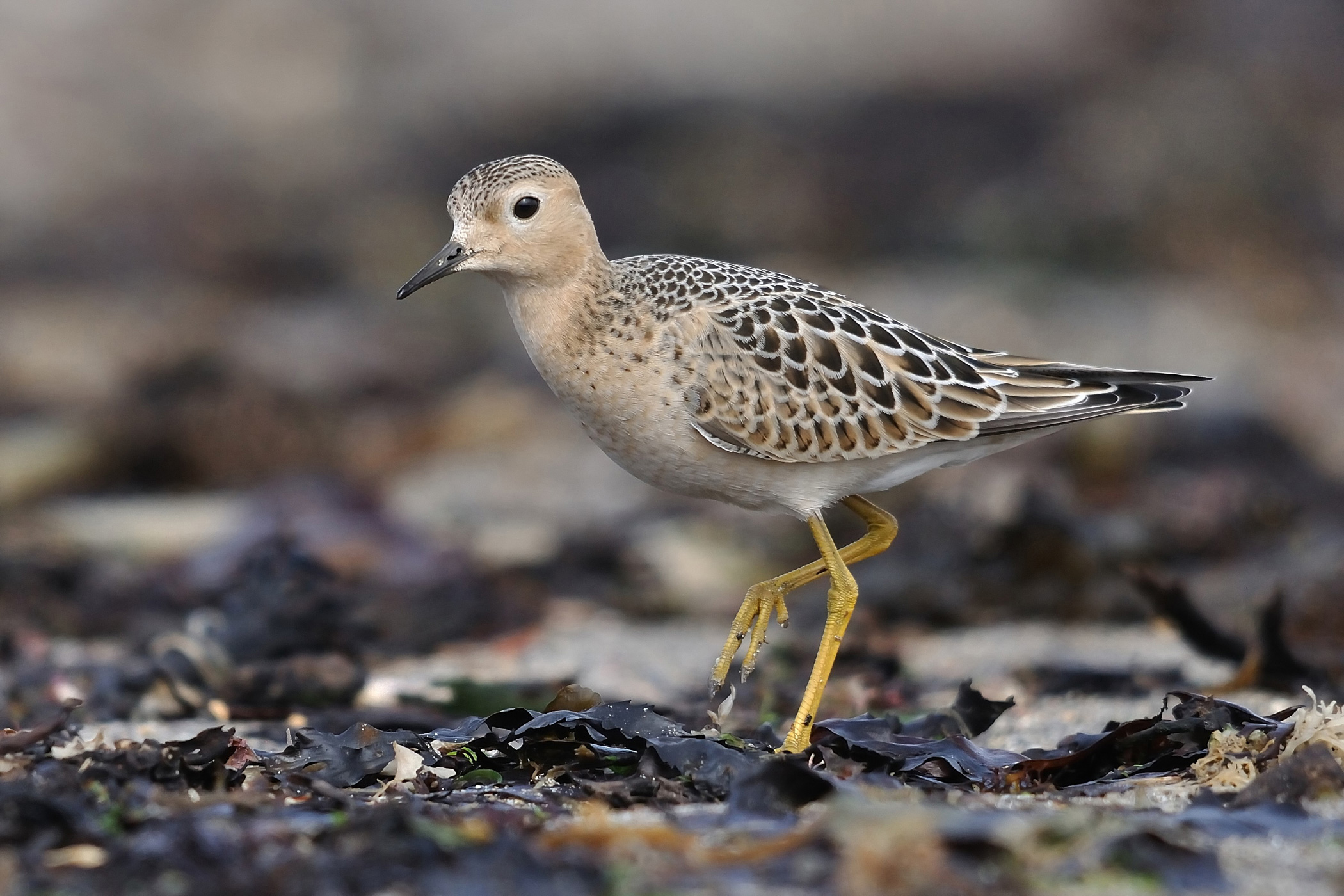
Despite a relatively small world population, Buff-breasted Sandpiper regularly occurs in good numbers between late August and October, with small flocks often encountered in westerly areas (Rónán McLaughlin).
Youngsters of some species are notoriously late in their occurrence here, presumably due to having a later breeding cycle. In Britain and Ireland, you can say with near-absolute confidence that a young Long-billed Dowitcher will not appear before the second week of September, while a juvenile White-rumped Sandpiper won't show up before 10th – and it is usually the very end of the month, even October, before the latter species begins to show up in any number. American Golden Plover is another species which seems to rise in frequency as September wears on, with the second half of the month and October producing an increasingly high proportion of juveniles.
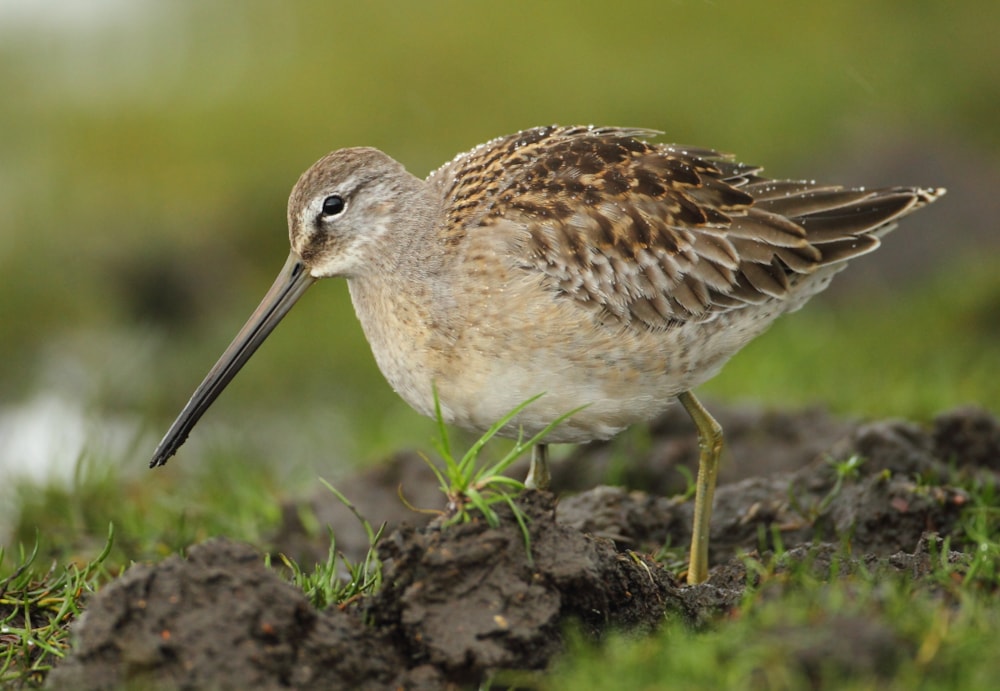
Though adults regularly occur in July and August, a juvenile Long-billed Dowitcher has never been recorded in Britain and Ireland before the second week of September. This species breeds predominately in eastern Siberia, but migrates south through North America to winter around the Gulf of Mexico, meaning arrivals here generally coincide with Nearctic species (Chris Cook).
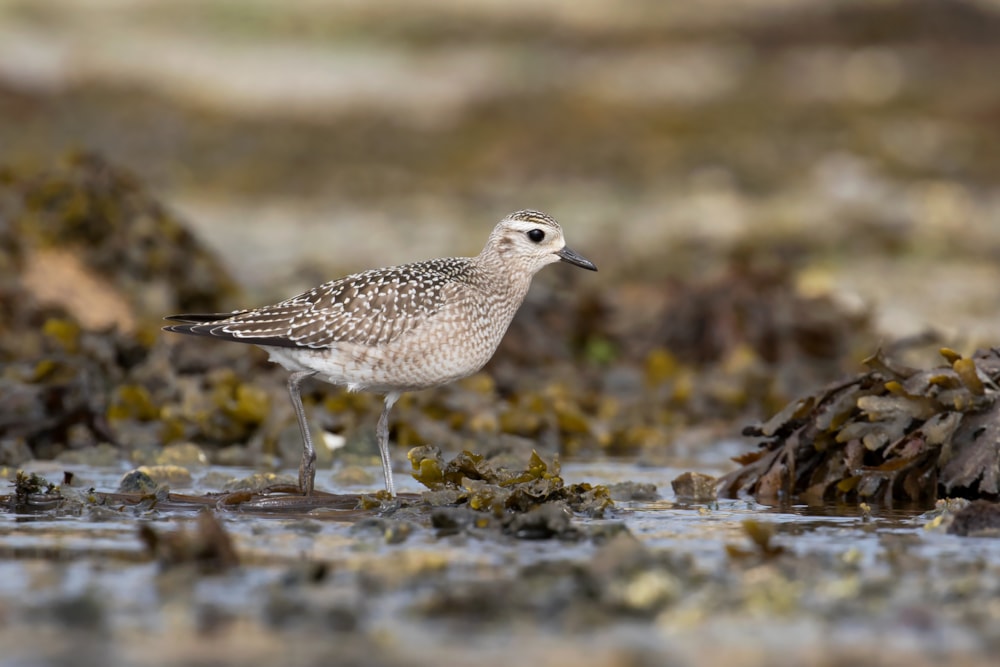
Juvenile American Golden Plovers become increasingly prominent from mid-September onwards (Josh Jones).
Rarer species to look out for in September include Least Sandpiper, a species which averages one every couple of years, and Western Sandpiper, which has been logged a total of 14 times across Britain and Ireland combined. Increasing identification awareness has led to an upturn in records of Semipalmated Plover in recent years and this is the month in which to start scrutinizing Ringed Plovers closely. Greater Yellowlegs has also been recorded 10 times in September, making it the optimum month for this rare Tringa. It's also likely that September is the prime time to be on the look-out for an overdue species in Britain and Ireland: Willet.
Where to look
Although they can occur just about anywhere in Britain and Ireland, including at inland waterbodies, the most consistently productive sites for Nearctic waders are in coastal areas in the west. Different species tend to prefer different habitat niches. For example, searching sandy beaches and estuaries offers the best chance of picking out a Baird's or Semipalmated Sandpiper from among a throng of Sanderling or Dunlin, while Buff-breasted Sandpipers and American Golden Plovers are more readily found in saltmarsh, machair or golf courses. Other species, such as Pectoral Sandpiper, are less fussy. Ultimately, the key to remember when searching for vagrants is that even small, apparently sub-optimal areas of habitat can produce, particularly in areas where suitable habitat is at a premium. Every year there are records of confiding vagrants occupying small puddles or muddy areas in bizarre places.
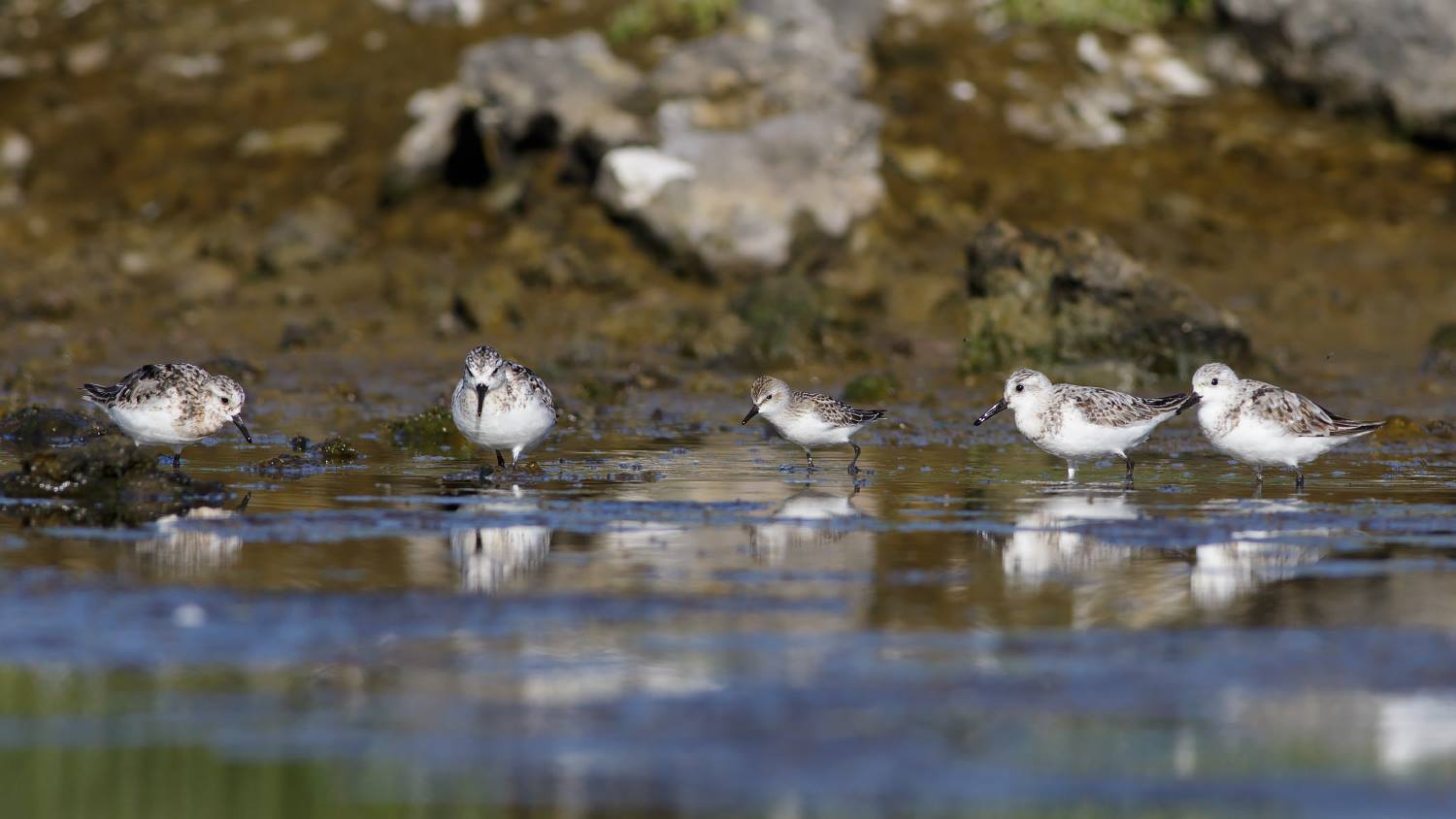
Sanderling flocks are an irresitible draw for a vagrant Semipalmated Sandpiper (centre bird) – many of the latter have been found among such congregations over the years, particularly on the beaches of western Ireland and the Outer Hebrides (Josh Jones).
In the south-west of England, Cornwall, Devon and the Isles of Scilly comfortably claim the lion's share of England's vagrants, with sites such as Davidstow Airfield, Marazion beach and Drift Reservoir each boasting a lengthy list of rare wader records.
While Wales does produce American waders, the small matter of Ireland to its west ensures that it is somewhat less prolific than it might otherwise be. Ireland itself is perhaps the best place to give yourself a chance of finding a Nearctic wader or two, especially on the west coast during the peak weeks of September, with just about any stretch of beach, marsh or machair from Co Cork to Co Donegal holding the potential to attract a lost shorebird. Here, vagrants are equally as likely to be found on their own as they are among their commoner cousins, and it is these lone individuals that often give the most impressive showings – not perceiving admiring birders as a threat, it is not unknown for them to perform to within touching distance at times.
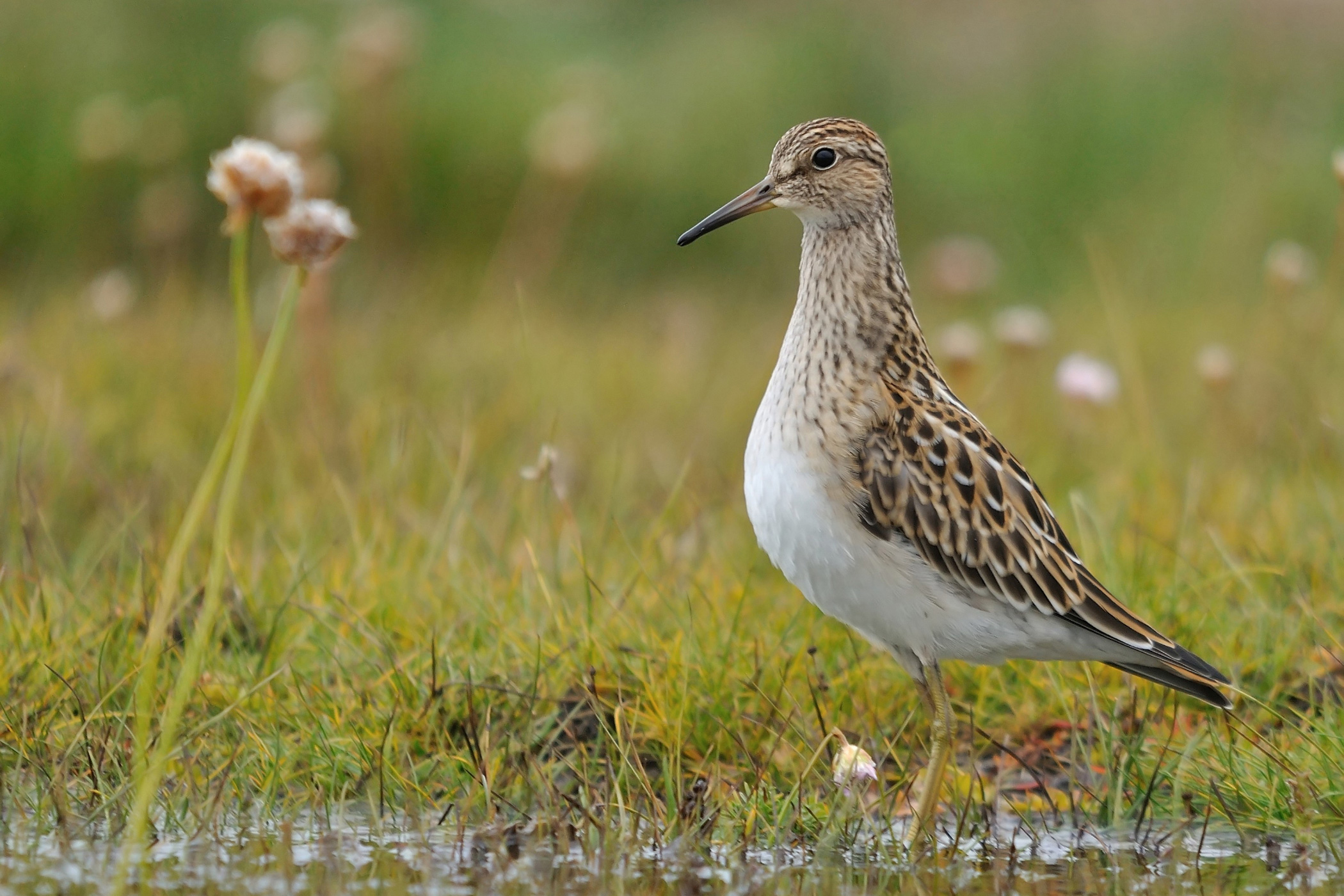
Pectoral Sandpipers are quite unfussy in their choice of habitat. Autumn migrants are just as content on sandy beaches and concrete reservoirs as they are in wet fields and muddy margins (Rónán McLaughlin).
Irish hot-spots such as Ballycotton, Lissagriffin, the Dingle peninsula, Carrahane Strand and The Mullet peninsula all consistently produce transatlantic visitors, and the paucity of birders in this part of the world often means you can enjoy vagrants all to yourself, which makes the experience all that more intimate.
In the case of western Ireland being the most productive for vagrants, the exception to the rule is the famous Tacumshin Lake, in south-east Co Wexford. Tacumshin is arguably the most prolific of all British and Irish sites for Nearctic waders, tending to draw in multiples of the regular species each year, as well as one or two rarer surprises. While there is no doubt that the large expanse of suitable habitat is no doubt a major reason for its success over the years, this south-eastern extremity of Ireland must also act as a funnelling point for arrivals from further north and west, explaining the high numbers of vagrants seen there each year.
Further north, the Outer Hebrides also produces good numbers of waders. The machair of western South Uist is a particularly productive area, with rarer species drawn to the roving flocks of European Golden Plovers here. Hot-spots include The Range at West Gerinish and the tidal estuary at Baile Gharbhaidh, while on North Uist, a mosaic of machair, saltmarsh and beaches ensures that Baleshare consistently produces notable sightings each autumn. At the northern tip of the archipelago, the Butt of Lewis area also produces American waders on an annual basis. Shetland too manages its fair share of transatlantic visitors each autumn, although it is not as reliable as the Western Isles.
When out birding this September, it's worth scrutinizing any groups of waders for a rarer visitor. And remember – it's more than worthwhile keeping an eye on what we perceive to be sub-standard habitat, particularly if on the west coast, where transatlantic arrivals are likely to pitch down first. You never know – an exquisitely plumaged, doughy-eyed young shorebird, fresh from the Canadian tundra and apparently oblivious to your presence just metres away, may just make your birding year.


